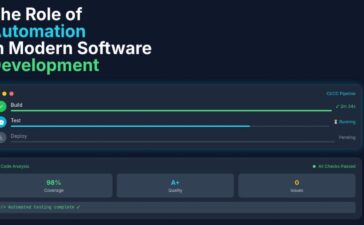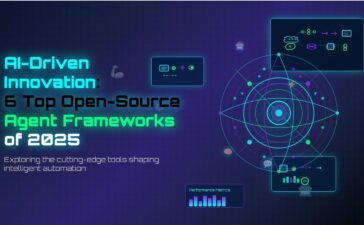Are you at a crossroads, trying to choose between Python and React.js for your upcoming project? It’s like deciding between two superheroes with different superpowers! Python, known for its versatility and ease of use, is like a trusty sidekick who can handle a wide range of tasks. On the other hand, React.js, with its lightning-fast user interface development capabilities, is akin to a powerful hero focused on creating captivating user experiences.
In this guide, we’ll dive into the strengths and specialties of both Python and React.js to help you determine which one suits your project’s needs best. Whether you’re building a web application, creating a data analysis tool, or crafting an interactive user interface, we’ll explore which technology might be the right fit for your next big endeavour. So, let’s embark on this tech adventure and discover which superhero technology will lead your project to success!
What is Python?
Python is a versatile and user-friendly programming language widely used for creating websites and web applications, known for its simplicity and robustness. When we talk about Python web development solutions, we refer to the tools and frameworks like Django and Flask that streamline website creation. Its readable syntax and extensive libraries make it accessible to beginners and efficient for professionals.
Python’s popularity in web development stems from its ability to handle databases, user authentication, and server-side logic effectively. With Python, developers can build modern, responsive websites with dynamic content and scalability. In essence, Python’s strength lies in its versatility and comprehensive ecosystem, making it a top choice for web development solutions across various industries.
Advantages of Python
Python has become one of the most beloved programming languages for a multitude of reasons. Its simplicity, readability, and versatility make it an excellent choice for beginners and seasoned developers alike. Here are some key advantages of Python:
Ease of Learning:
Python’s syntax is designed to be readable and intuitive, resembling plain English. This makes it easy for beginners to grasp fundamental programming concepts and start coding quickly.
Vast Ecosystem:
Python boasts a rich collection of libraries and frameworks that cater to various needs. Whether you’re into web development, data science, machine learning, or automation, Python has tools like Django, Flask, NumPy, pandas, TensorFlow, and more to support your projects.
Versatility:
Python can be used for a wide range of applications, from web development to scientific computing and artificial intelligence. Its flexibility allows developers to switch between different types of projects seamlessly.
Community Support:
The Python community is incredibly active and supportive. You can find numerous resources, tutorials, and forums where developers share knowledge, collaborate on projects, and help each other troubleshoot issues.
Portability:
Python is a platform-independent language, meaning code written in Python can run on various operating systems without modifications. This portability is advantageous for deploying applications across different environments.
Scalability:
Python is scalable, allowing developers to start with small scripts and gradually build complex applications. This scalability makes it ideal for startups and enterprises alike, accommodating growth and evolving project requirements.
Integration Capabilities:
Python integrates seamlessly with other languages and technologies. It can be embedded within C/C++ code, communicate with databases, interface with web APIs, and integrate with frontend frameworks like React.js.
Support for Automation:
Python’s simplicity and readability make it perfect for automating repetitive tasks and workflows. This is particularly beneficial for tasks like data processing, file manipulation, and system administration.
Disadvantages of Python
While Python is a fantastic language with many strengths, it’s essential to acknowledge its limitations as well. Here are some disadvantages of Python:
Speed:
Python is an interpreted language, which means it can be slower than compiled languages like C++ or Java. This can be a drawback for applications that require high-speed processing or real-time operations.
Mobile Development:
Python is not as widely used in mobile app development compared to languages like Swift (for iOS) and Java/Kotlin (for Android). Although frameworks like Kivy and BeeWare exist, they may not offer the same level of native performance and tooling.
Memory Consumption:
Python’s dynamic typing and automatic memory management can lead to higher memory consumption compared to statically typed languages. This can be a concern for applications running on resource-constrained devices or environments.
Global Interpreter Lock (GIL):
In Python, the Global Interpreter Lock restricts multithreaded performance by allowing only one thread to execute Python bytecode at a time. While this doesn’t pose significant issues for many applications, it can limit the scalability of CPU-bound concurrent tasks.
Mobile and Game Development Libraries:
While Python has libraries for various purposes, its offerings in mobile and game development may not be as extensive or mature as those of languages like C# (for Unity) or Java (for Android game development).
Less Suitable for Low-Level Programming:
Python’s high-level nature and automatic memory management make it less suitable for low-level programming tasks like operating system development or device drivers, where precise control over hardware is crucial.
Version Compatibility:
Python has undergone significant changes between versions, leading to compatibility issues with older codebases and dependencies. Managing dependencies and ensuring compatibility across different Python versions can be challenging in some cases.
Limited in Performance-Critical Applications:
While Python excels in many domains, it may not be the best choice for highly performance-critical applications like real-time trading systems or high-frequency algorithms, where microseconds matter.
What is ReactJS?
ReactJS, or React for short, is a powerful JavaScript library used for building user interfaces. It’s particularly popular for creating interactive and dynamic web applications. Developed by Facebook, React simplifies the process of creating complex UIs by breaking them down into reusable components.
When we talk about a ReactJS web development company, we’re referring to a company that specializes in leveraging React to build modern and responsive web applications. React’s key feature is its component-based architecture, which promotes code reusability, maintainability, and efficiency.
Using React, developers can create interactive interfaces with ease, handle data updates efficiently, and build seamless single-page applications (SPAs). Its virtual DOM (Document Object Model) ensures optimal performance by updating only the necessary parts of the UI when data changes.
Advantages of ReactJS
ReactJS, commonly known as React, offers several advantages that make it a popular choice for building modern web applications. Here’s a user-friendly elaboration on the advantages of ReactJS:
Component-Based Architecture:
React follows a component-based architecture, allowing developers to break down the UI into reusable components. This promotes code reusability, and maintainability, and makes it easier to manage complex UIs.
Virtual DOM:
React utilizes a virtual DOM (Document Object Model), which is a lightweight representation of the actual DOM. This approach improves performance by minimizing DOM manipulation, resulting in faster rendering and better user experience.
Declarative Programming:
React uses a declarative approach to building UIs, where developers describe “what” the UI should look like based on the application state, rather than focusing on “how” to manipulate the DOM. This simplifies the development process and makes code more predictable and easier to debug.
Efficient Data Binding:
React’s one-way data flow (downward data binding) ensures that changes in the application state automatically update the corresponding components. This ensures consistency and reduces the risk of bugs caused by inconsistent data.
Community and Ecosystem:
React has a large and active community of developers and a vast ecosystem of libraries, tools, and resources. This community support translates into faster problem-solving, access to best practices, and a wealth of third-party components and plugins.
JSX Syntax:
React uses JSX (JavaScript XML), an extension that allows developers to write HTML-like code directly within JavaScript. This simplifies UI development by combining HTML structure and JavaScript logic in a single file, enhancing code readability and maintainability.
Cross-Platform Compatibility:
React’s component-based approach and the use of reusable components make it suitable for building cross-platform applications. Developers can use React Native, a framework based on React, to build native mobile apps for iOS and Android using the same codebase.
Performance Optimization:
React provides tools and techniques for performance optimization, such as code splitting, lazy loading, and memoization. These optimizations ensure that applications built with React are fast, efficient, and scalable.
Disadvantages of ReactJS
Here’s an elaboration on the disadvantages of ReactJS:
Complexity for Beginners:
ReactJS, with its component-based architecture and use of JSX syntax, can initially be complex for beginners to grasp. Understanding concepts like state management, props, and component lifecycle methods may require a learning curve.
Toolchain Complexity:
Setting up a development environment for React projects often involves configuring various tools such as Babel, Webpack, and ESLint. Managing this toolchain and understanding how they work together can be overwhelming for newcomers.
Overhead for Small Projects:
React’s architecture, while beneficial for large-scale applications, can introduce overhead for small projects. Using React for simple static websites or content-focused pages may be more complex than necessary.
Learning Curve for Redux:
Redux, a popular state management library used with React, has a steep learning curve for some developers. Understanding concepts like actions, reducers, and the Redux store may require additional time and effort.
Performance Impact:
While React’s virtual DOM improves performance by reducing unnecessary DOM updates, large and deeply nested component trees can still impact performance. Careful optimization and component design are necessary to maintain smooth user experiences.
Community Fragmentation:
React’s ecosystem includes various third-party libraries and frameworks, leading to community fragmentation. Choosing the right tools and staying updated with the latest practices can be challenging due to the abundance of options.
SEO Challenges:
React applications rendered on the client side may face challenges with search engine optimization (SEO). Ensuring proper server-side rendering (SSR) or implementing techniques like prerendering is necessary to improve SEO for React applications.
Integration with Legacy Code:
Integrating React into existing projects or legacy codebases may require additional effort and compatibility checks. Ensuring seamless integration and avoiding conflicts with existing libraries or frameworks can be a concern.
Python vs React.js: Comparison
| Aspect | Python | ReactJS |
| Type | General-purpose programming language | JavaScript library for building user interfaces |
| Use Cases | Web development, data analysis, automation, AI/ML | User interface development, single-page applications, cross-platform apps |
| Learning Curve | Beginner-friendly, readable syntax | Moderate, requires understanding of components, state management, JSX syntax |
| Performance | Performance varies based on task | Good performance due to virtual DOM and efficient rendering |
| Integration | Integrates well with various technologies | Integrates with other JavaScript libraries/frameworks |
| Versatility | Versatile, used in backend, data processing, automation | UI-focused, ideal for building interactive interfaces |
| Cross-Platform | Backend logic and general-purpose programming | Frontend development, extending to mobile app development with React Native |
| Ecosystem | Rich ecosystem with libraries and frameworks | Vast ecosystem with tools for UI development |
| Community | Large and supportive community | Strong community with extensive documentation and resources |
| Scalability | Scales well from small scripts to large applications | Suitable for scalable UI development and SPAs |
Conclusion
In the debate of Python vs React.js, the right technology for your next project ultimately depends on the project’s specific requirements and goals. If you need a versatile language for backend development, data processing, and automation, Python is the ideal choice. On the other hand, if your focus is on building dynamic and interactive user interfaces for web applications, React.js shines with its component-based architecture and efficient rendering. Consider the strengths and capabilities of each technology carefully to determine which one aligns best with your project’s needs and objectives.





